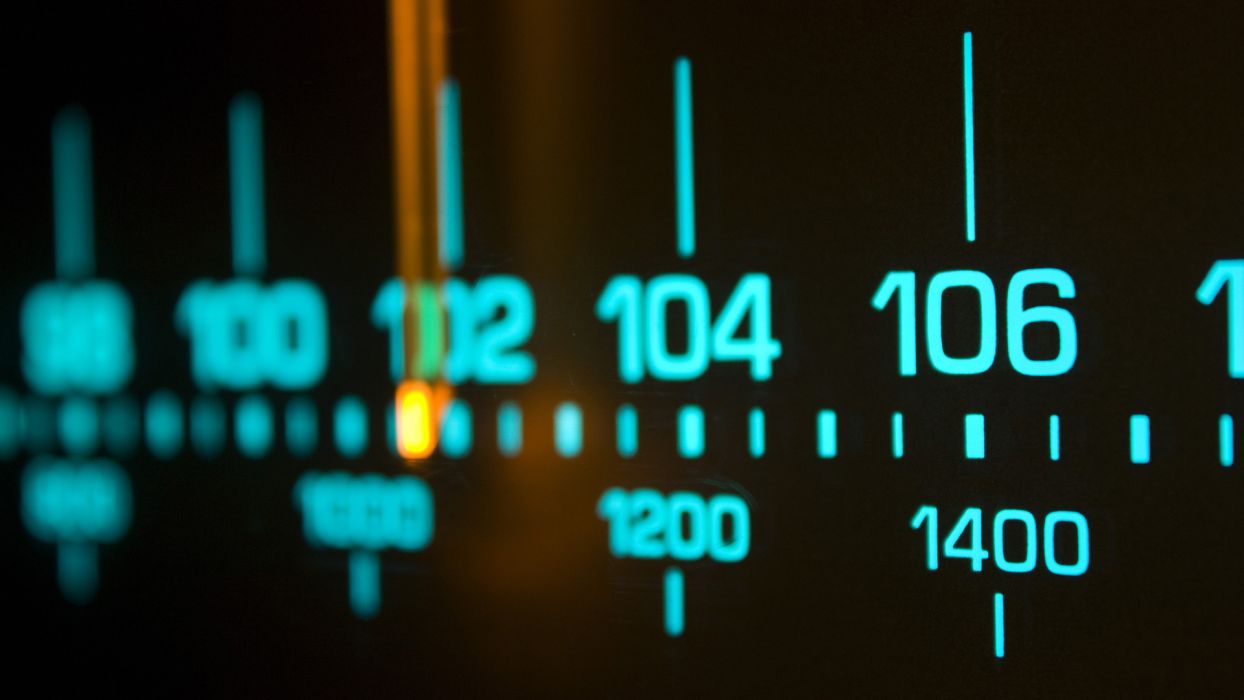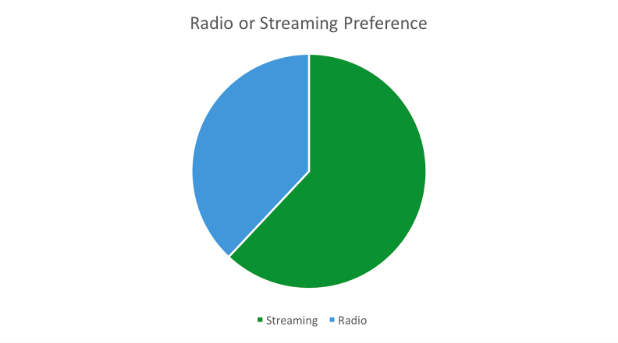|
Author: Nicole Marchesi In the past year radio has been under scrutiny for lacking diversity, forcing listeners to turn to streaming sites for new music. As a result, studies predict that radio broadcasting will become extinct in the coming decades. While some can argue that radio is easier to access in the car and allows for interaction between a listener and a station’s host, those born into the digital age argue that the radio is a poor source to discover new music and is difficult to listen to on a smartphone. Streaming, however, allows listeners to choose the music they want to listen to and is compatible with in home speakers and devices. To explore this trend further we conducted a survey asking 50 people how many hours they spend listening to the radio versus streaming sites. Additionally, the sample was asked about their age to determine whether one’s age correlated to which format they listen to most. While the majority of poll takers under the age of 30 listen to the radio, 94% surveyed prefer to listen to streaming sites. Younger poll takers listen to 1.46 hours of music on the radio on average and stream an average of 5.68 hours of music on digital platforms. This demonstrates that streaming sites are more easily accessible to listeners under the age of 30. In a study done by Music Watch, they found that streaming sites in comparison to broadcast radio are easier to navigate, keeps listeners aware of music trends, and helps in discovering new songs and artists. Without having to rely on the choices made by radio executives, streaming platforms allow listeners to discover unsigned artists and create playlists of their own. According to data found by Edison Research and Triton Digital’s Infinite Dial, only 19% of listeners choose radio as the top source for new music in 2017. The following year Spotify, YouTube, and Pandora more than doubled in sales revenue. This study also found that music discovery and keeping up-to-date with current music trends is important among listeners age 12-24. The increase in streaming usage has current radio executives turning to steaming services as an indication of an artist or song’s popularity, therefore catching onto music trends too late. In the past, listeners relied on the radio as their main source for music. The radio allowed for a variety of music to be heard, without the customer having to purchase entire albums in the form of a CD or vinyl. Accustomed to radio’s influence on music selection, the majority of individuals over the age of 30 prefer listening the radio. Of the data we collected, poll takers listen to 3 hours of music on the radio and 2.95 hours on streaming sites each day. Removing the outliers which listen to music on streaming sites for 8 and 11 hours, the average for listening to streaming sites is 2.25 hours. Radio’s selling point is its easy accessibility in the car. According to the US Department of Transportation, the typical car is 11.6 years old, meaning the majority of vehicles are without the equipment necessary to play music from a smartphone or other digital device. Discovered by CNBC, drivers born between 1946 and 1964 are buying new vehicles at a slower rate representing only 36% of new car buyers down from previous years where they made up 42% of buyers. This indicates that older listeners typically tune in to the radio while in their cars. A sample of 50 subjects were administered the survey ranging from the age of 17 to the age of 68. Of our sample, 62% listen to music primarily on streaming sites leaving 38% who prefer to listen to the radio. Overall, poll takers over the age of 30 listen to fewer hours of music with an average of 2.976 hours per day, while those under the age of 30 listen to an average of 3.57 hours of music per day. This speaks to the how the music industry is less dependent on radio as a source of music exposure, meaning the easy accessibility of streaming is allowing the younger generation to listen to music for more hours each day. Streaming is now available to listeners on their mobile devices, through their home speakers, and in the car.
Platforms such as Spotify and Pandora allow people to listen to music while undergoing everyday tasks including commuting, studying, and exercising. Although listening to the radio in the car remains convenient, car manufacturers began selling models with smartphone connectivity in 2015, installing USB ports and Bluetooth enabled devices. Bluetooth speakers and in home audible devices, including the Amazon Echo, focus on streaming services allowing for music to be played from a mobile device rather than through AM/FM radio channels. In the digital era, streaming sites are becoming the primary source for listening to music. Radio broadcasters are faced with how to engage with their younger audience, who prefer commercial free music and personalization. Upon our research, we agree with New York University’s Larry Miller who believes that radio stations must adapt to the rise of digital streaming. Applications including iHeartRadio and TuneIn allow listeners to stream local and national radio stations on their smartphone devices. Radio stations may also attract listeners by offering giveaways to concerts and sponsored events, continuing to market their clients’ products while offering incentives unavailable to those who stream their music. Additionally, radio stations would limit commercials which don’t provide incentives to their listeners. Another source of attracting a younger audience is by introducing new songs and artists regularly. Radio broadcasters must work with recording companies to discover new talent, before the public does. To understand their audience, radio stations should also provide their listeners with a platform to voice their opinion of the artists played on the station and request artists they’d want to hear. The best thing a listener can do is reach out to radio broadcasters and demand what they want to hear. If that doesn’t work, turn to the radio stations who do take your requests, because the point of the matter is radio provides exposure for artists and without it talent goes unrecognized. Talent the women in country music have right now.
1 Comment
9/13/2019 11:40:58 am
It's interesting that the average amount of music people under the age of thirty listen to is 3.57 hours of music daily while those over thirty listen to a lot less. What makes the difference between times? I know that I listen to quite a lot of music a day, seeing as I listen nearly my whole workday. It would be interesting to see what affects the amount of music people listen to besides just age.
Reply
Leave a Reply. |
NewsletterARCHIVES
June 2024
|



